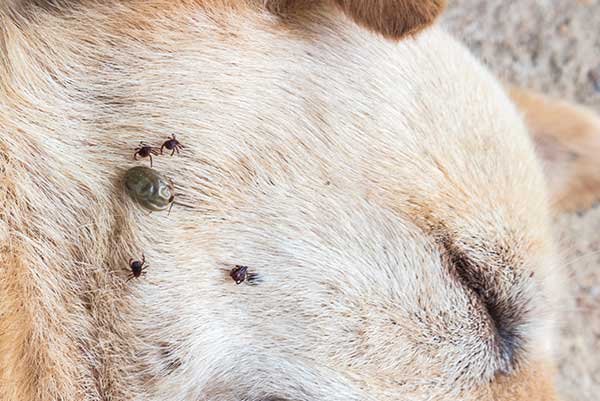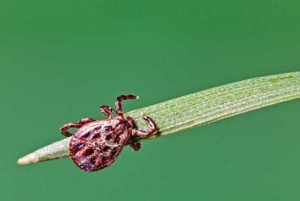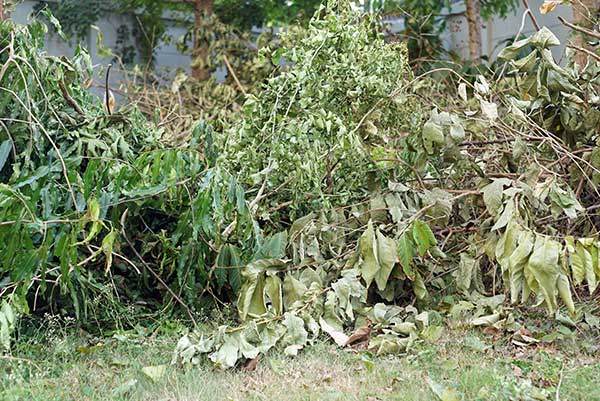3 Steps to Prepare Your Lawn for Flea and Tick Season in the Midwest
As warmer weather sets in, it’s time to head outdoors for some fresh air and fun. The whole family has likely been waiting months for the chance to enjoy their lawn once again. However, summer in the Midwest also marks the height of flea and tick season and an infestation from these insects can quickly make you hesitant to spend time outside. However, you don’t have to let these common lawn pests drive you back indoors since there are preventative measures to control these parasites and reduce the risks they pose to your family or pets.
Flea and Tick Threats to Pets and Children
 The presence of fleas and ticks can make spending time outside far less enjoyable and can also cause some serious issues. While their bites alone are annoying and painful, fleas and ticks also carry diseases that can be spread to humans and animals.
The presence of fleas and ticks can make spending time outside far less enjoyable and can also cause some serious issues. While their bites alone are annoying and painful, fleas and ticks also carry diseases that can be spread to humans and animals.
Fleas can carry typhus and plague and can transmit these pathogens to humans. They are also a frequent host to tapeworms, and their eggs can infect both pets and children, though they are more likely to bother pets. Flea bites are itchy and uncomfortable, tempting your children to scratch at the bites, which could lead to scarring or worse.
A bite from an infected tick can also transmit some unpleasant diseases to humans. Tick-borne illnesses include Lyme disease, Rocky Mountain spotted fever and ehrlichiosis. Ticks cannot spread germs unless they bite, so take preventative measures, like an insect repellant, and check for the presence of ticks to avoid getting sick.

Once fleas and ticks are present in your yard, it’s possible for them to make their way into your home via your pet, on an item of clothing, or an object that has been left outside. Since ticks cling to clothing and skin, always check yourself for ticks after spending time outside, to keep their infestation outdoors.
One of the best ways to minimize the chances of an uninvited guest coming indoors is to keep your pet up-to-date with their treatments. Talk to your vet about the various options to deter fleas and ticks such as topical applications, collars, chewable tablets, shampoos, and more. Frequently groom your pet, wash their bedding, and examine them for any signs that these pests are present. If you find any evidence of a bite or infestation, take immediate action to control the situation.
Step 1: Cut Your Grass and Tidy Up the Lawn


Mow your lawn regularly and prune your trees and shrubs to make your lawn less hospitable and to fleas and ticks. Always clean up the clippings and dispose of them properly. Look around your yard for other potential hiding spots, which can include empty bird nests, piles of wood or bricks, gardening tools, and even discarded toys.
Pay close attention to the edges of your lawn, especially if it borders a forest or other natural area. These are prime locations for wildlife, fleas and ticks to find their way on to your property. A gravel border or wood chip border around your patio or children’s play area is an effective way to limit the number of ticks that migrate onto your yard from the surrounding areas. The CDC recommends that such barriers be three feet wide for the best results.
Step 2: Reduce Wildlife and Rodent Visits To Your Lawn
While cleaning up overgrowth is effective, it’s not enough since fleas and ticks migrate by clinging onto animal hosts. Ticks can detach themselves and flea eggs can fall from hosts passing through. It’s important to remember that all forms of wildlife that wander through your yard are potential hosts for fleas or ticks.

Deer, rabbits, squirrels, and rodents are frequent carriers of fleas and ticks. Mice themselves often host the bacteria responsible for causing Lyme disease. If a tick bites an infected mouse, it can then pass the bacteria onto you or your pet.
Deter common wildlife from entering your home and property by keeping your yard tidy and clean, while limiting access to your property. Fix holes in fences or gates to avoid giving passing wildlife easy entrance onto your property. If that is not enough to keep wildlife out, you can take it a step further by installing deer fencing or planting deer-resistant plants. Keep garbage cans shut tightly, and always clean up spilled pet food or birdseed.
Step 3: Apply Flea & Tick Treatment to Your Lawn
Cutting your grass regularly and keeping the lawn tidy will help lower the flea and tick populations, but that won’t keep them away from your lawn completely. A flea and tick treatment is the best way to target any pests that have made it to your lawn and so will reduce the chances of a flea infestation or a tick bite. Decreasing their population also prevents them from entering your home on your pet’s fur or your clothing.
Flea and tick treatments must be applied to the entire lawn area to be of any use. That means you have to include your grass, trees, and shrubs. Pay particular attention to damp and brushy areas with heavy shade, as these are favored hiding spots. Fence lines, dog kennels, sheds, and patios all need to be treated, as do the entrances to your home.
It should be noted that, while it may seem easier to treat your lawn on your own, most store-bought products aren’t very effective, and are hampered by confusing directions. Hiring a professional is best to ensure that your yard receives the correct treatment. Professional service includes an inspection of your property to get advice and tips on lawn care and landscaping practices.
The RYAN Flea & Tick Control Program
The RYAN Flea and Tick program reduces the parasite population in your lawn. Our experts apply granular and liquid materials to your lawn that are highly effective at controlling these parasites to make your yard a safe place for your children and pets. Each application lasts for weeks at a time, giving you lasting results and the peace of mind to enjoy your yard throughout the year, without worrying about parasites!
We would love to help you. Get a Free Estimate today for help with a professional home flea & tick treatment by a RYAN pest control expert!









